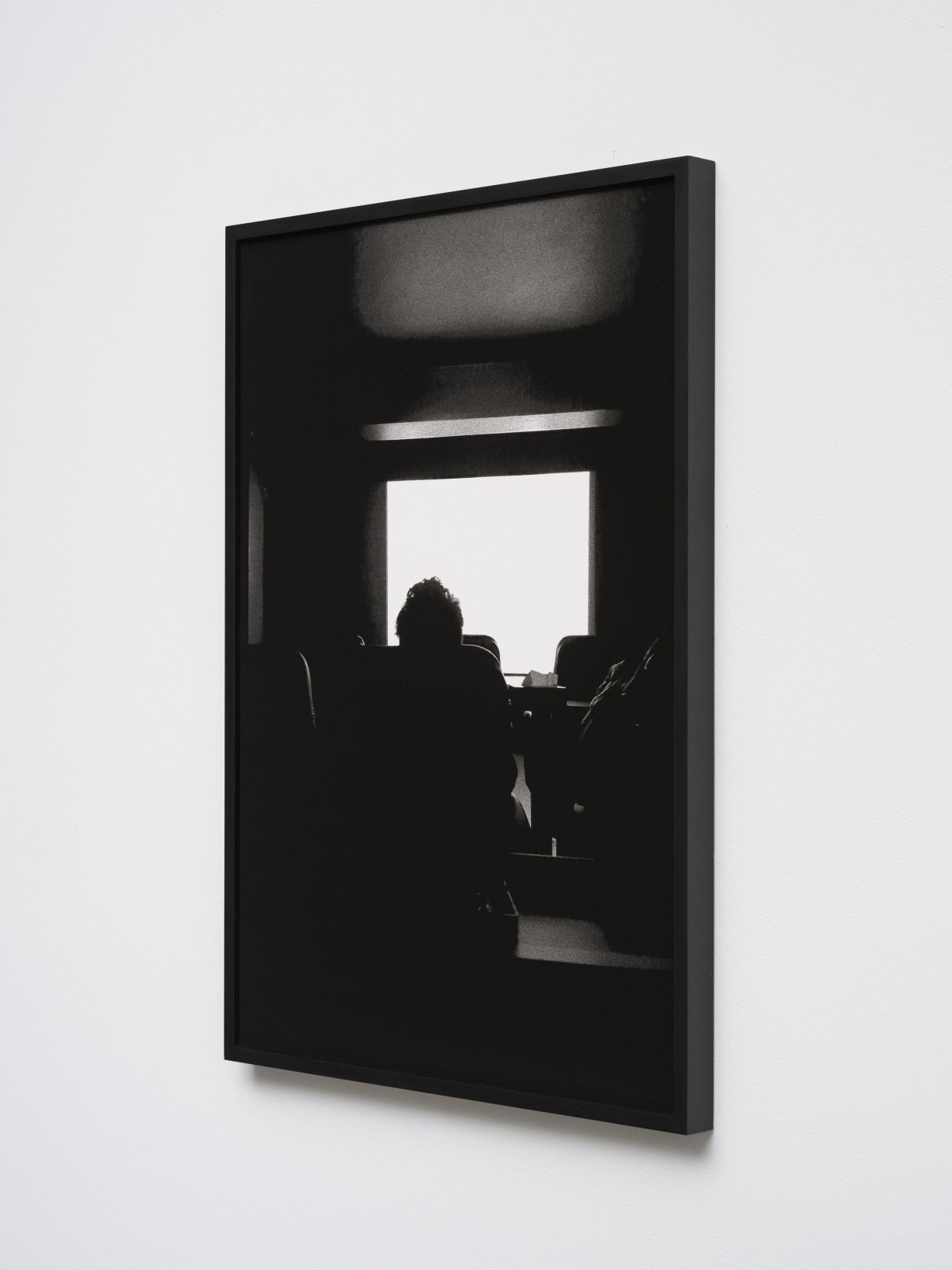being alone at Soft Opening, London enforces something lewd about the gallery-viewing experience
I was when I went into the gallery on a sunny Saturday afternoon. And it’s hard to imagine seeing Dean Sameshima’s being alone in anything like a group or a crowd. It would feel rude. In a way, unfaithful to what’s on show. The exhibition features 25 inkjet prints featuring individuals (in the main) who are seated (for the most part) in various small, shabby cinemas, with their backs to us, facing luminous, but blank, screens. Some of the spaces are more like domestic rooms; others fit more closely with what you’d imagine a cinema to be. None of the individuals present are identifiable, which makes you look at them all the more closely, in case something slipped. The screen in each image that is overexposed (both in the photographic sense, and in terms of the investment that it is given) is the centre of their attention in any case. As a viewer you can’t help but be aware that you’re projecting onto a space of projection. Which, judging by the number of tissue boxes in the shots, is what those who are seated are doing too.
Each of the photographs is titled being alone and numbered (1–25), although they are not sequenced in numerical order as they flow, in linear fashion, around the walls of the gallery. As a group, the images look as though they’re the product of an obsession or compulsion: each one is generally the same as those neighbouring it, just different in the details. Similarly, as a viewer, you start to obsess a little over these differences (an abandoned drink can, fancier seating, chairs bolted to the floor, someone standing up) that distinguish one photo from the next. It’s not long before you think that ‘an excess’ would be the true collective noun for this show.

The leaflet that accompanies the exhibition states that each of the cinemas ‘offer the kind of encounter that has been described as an “anonymous being-together”, a space wherein an individual can project not only his own desire and sexual fantasy… but disidentify with the external world’. It brings to mind a tortoise in its carapace. A hunchback in a cathedral. A Ukrainian or Palestinian hiding in a bunker. But although the synapses fire and these types of associations flash past, what’s on show is a little more perverse than that. And not just because we can imagine what kind of porn the people depicted might be watching. Or how they might be showing their appreciation of it.
The true perversity actually lies in Sameshima’s decision to show us something, again and again, that shows us nothing: neither details of the bodies that occupy the cinema, nor the bodies that they are, presumably, looking at onscreen. On the one hand, it’s like a line from Bret Easton Ellis’s 1987 satire, The Rules of Attraction: ‘No one will ever know anyone. We just have to deal with each other.’ On the other, you can’t help but be conscious that ‘we’, the viewers in the gallery, are reenacting what ‘they’, the viewers in the photographs, are doing. And then the mind drifts to wonder whether ‘they’ are enjoying their experience, while ‘we’ are worrying about what it all means.
being alone at Soft Opening, London, through 8 June
